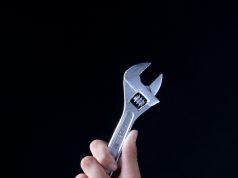Before buying a new home you are probably aware of the common surveys that take place including building surveys and home buyer surveys. But thousands of homeowners every year completely negate a damp damp survey before moving in which leads to all kinds of underlying damp problems arising in the home in the years to come. Damp is a very common issue in houses across the UK so must be regularly surveyed to prevent serious damage to your property and/or health.
What is a damp survey?
A damp survey is a complete inspection of the interior and exterior of your house that includes all aspects of damp. This includes rising damp, penetrating damp, condensation, mould, bridging, tanking installation, internal wall damp, damp proofing, basements and more. Home buyer surveys and building surveys are well known to include basic damp testing within the surveys they carry out but the problem is they only test for moisture levels and rarely go any deeper than the surface. To find the source of all the issues mentioned about the right testing equipment must be used by a damp specialist.
What are the most common types of damp?
Rising damp
Rising damp is a type of damp that rises from the ground and seeps through your damp course. Rising damp can be very destructive to your home, causing internal damage to plaster, cracking, and mould issues which can then lead to bad respiratory health. To test rising damp a moisture meter should be used on the walls. If readings are above 10% treatment is recommended before the walls start to experience further damage.
How to treat rising damp?
To treat rising damp if the walls are already damaged on the interior the plaster must be removed and a new damp proofing course should be installed along with allowing the walls to dry before re-plastering takes place.
Re-plastering should begin after 2-3 weeks of drying time. For the re-plastering to have good protection against rising damp a base coat should be used with sand and cement mixed with a high quality waterproof additive. The walls can then be completed with a multi finish plaster.
Penetrating damp
Penetrating damp is a form of damp that sources from the outside of the property and ingresses to the interior where it causes bad damage to the walls, ceilings, and floors of the property. Common reasons for penetrating damp occur from defects in the property including leaked roof, bad guttering, affected draining, porous brickwork, and bad exterior rendering. If these areas appear and do not get fixed quickly they can be the cause for serious penetrating damp in the property that can lead to thousands of pounds in repairs.
How to treat penetrating damp?
The best treatment for Penetrating damp is to prevent the issue from occurring in the first place. To do this the property should be regularly checked for defects and damages. If the issue has already become serious then internal replacements may be needed as the damp will not heal on its own.
Porous brickwork is due to old bricks losing their natural protection properties which causes the heavy rain to penetrate through to the internal walls. To protect against this a waterproof coating can be spray applied to inject the brickwork and add a water repellent property that stops further water ingress into your home.
What to do to prevent damp before it starts
The best solution to damp is to prevent it starting. This begins with a yearly survey for your home to check all appropriate areas of damp. Your home is your most important asset, don’t take risks with damp!














